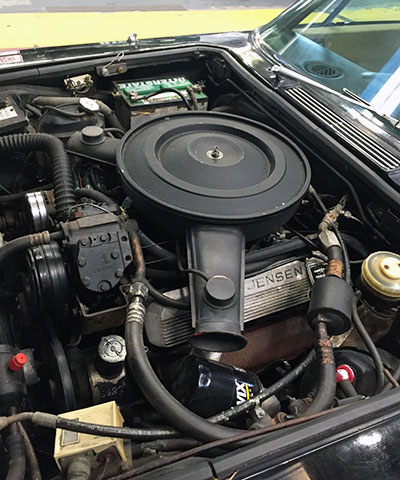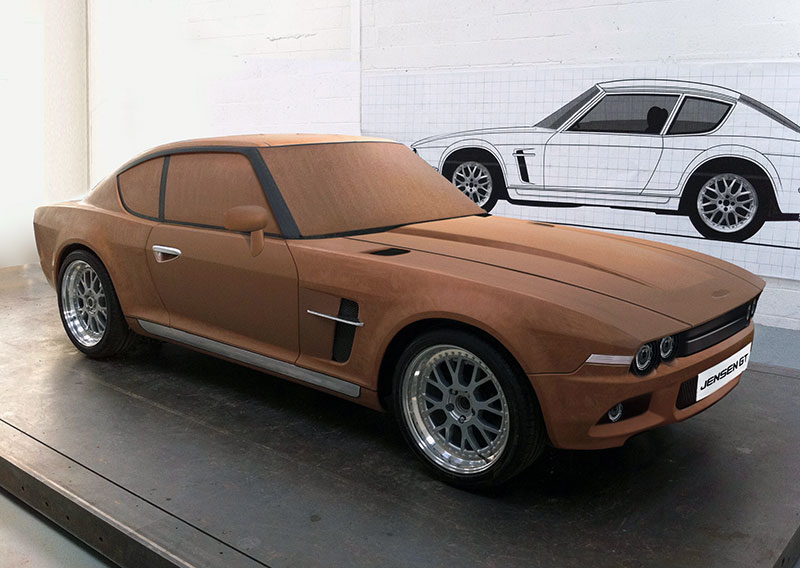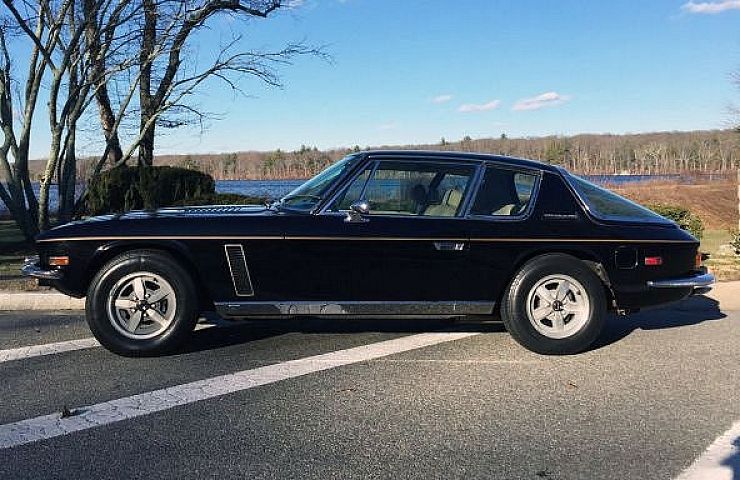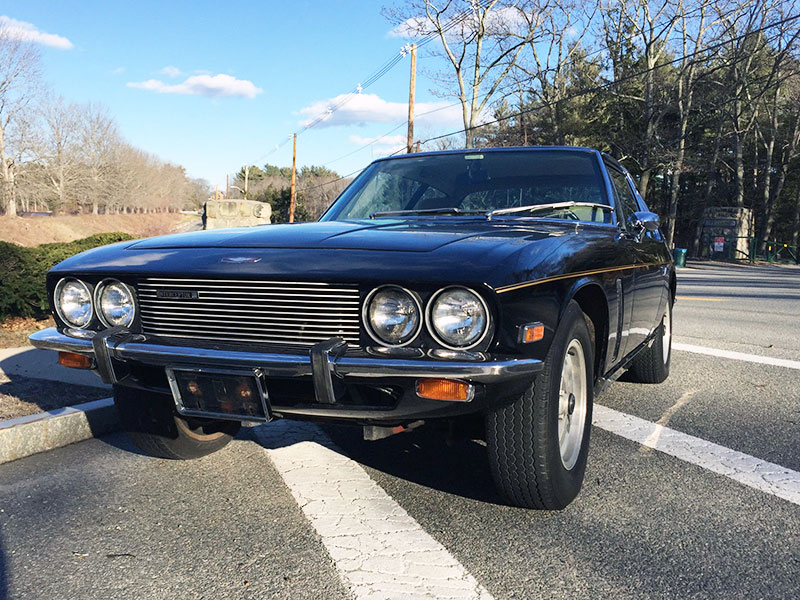In the original muscle car era, the Big Three battled for supremacy with big displacement V8s in intermediate coupes. Meanwhile, European manufacturers continued to focus on small displacement mills in diminutive coupes. But some auto aficionados across the pond yearned for Yankee-like grunt—a desire that gave birth to the Jensen Interceptor.
In the early 1960s, Allan and Richard Jensen of Birmingham, England saw a market that was underserved in Europe. With experience making bodies for the Volvo P1800, Sunbeam Tiger and Austin-Healey—as well as launching a previous iteration of the Interceptor in 1950—they decided to take a radical new approach: using an American big-block V8.
Of course, this wasn’t the first time merger of a British chassis and American V8 iron. By the mid-1960s Caroll Shelby was already a household name in the automotive world with the AC Cobra and Shelby Daytona—having taken the British AC Bristol roadster and shoehorning Ford V8s into the engine bay. Yet, no one had taken the brutal big-block V8s from Chrysler and gave them a home in a European body.
Instead of using an in-house team, Jensen farmed out the new Interceptor’s design to Italian firm Carrozzeria Touring, which gave the new car a fastback design with large wraparound rear window, along with a hatchback rear tailgate and 2+2 seating arrangement. In line with its high-end aspirations, the new Interceptor came well equipped from the moment it landed in Jensen showrooms in 1965. That meant reclining seats, electric windows, and stereo audio, as well as a live rear axle with adjustable Armstrong Selectaride rear shocks that could be adjusted from inside the cabin.

While the valve covers might say Jensen on them, this massive 440 cubic inch power plant was sourced directly from Chrysler in America, meaning it’s the very same motor found in top-spec Dodge Challengers and Plymouth Road Runners.
Of course the real party piece of the new Interceptor was under the hood. At launch the car was offered with a choice of two different Chrysler V8 power plants: a Chrysler 273ci small block V8 or the big-block 383ci V8, with the latter offering 325 horsepower and stump-pulling 425 pound-feet of torque. Buyers could also choose between a four-speed manual gearbox or the TorqueFlight three-speed automatic.
In 1971, Jensen decided to take things a step further, dropping Chrylser’s venerable 440ci engine into the Interceptor, as this prime left-hand-drive example shows, dishing out nearly 400 horsepower in its top-spec configuration.
In a car that weighed about 3,500 pounds and which sported a limited slip differential with a a 3.07:1 gear ratio, the new top-spec Interceptor offered more thrust than customery for British motorists. The UK’s Autocar magazine exclaimed, “To say that the acceleration is electrifying is something of an understatement.” The magazine compared its performance to the revered Aston Martin DB6, Porsche 911 S, and Jaguar E-Type.
It’s Back!
With the downturn of the economy in the 1970s, production of the Interceptor ceased in 1976. But after decades of false-start attempts to revive the company, it looks like an all-new Jensen is finally on the way. Like the original Interceptor, the GT will get its motivation from a burly American V8: a supercharged 6.4-liter V8 sourced from General Motors making an estimated 665 horsepower, which will be hooked up to either a six-speed manual or a six-speed automatic gearbox.

The new Jensen GT’s design will be inspired by the original Interceptor, although it will source its power plant from General Motors rather than Chrysler.
With the return of the Interceptor, interest in classic Interceptors is likely to be on the rise. Collectors should be advised to buy now before prices on these rare machines take off into the stratosphere.






